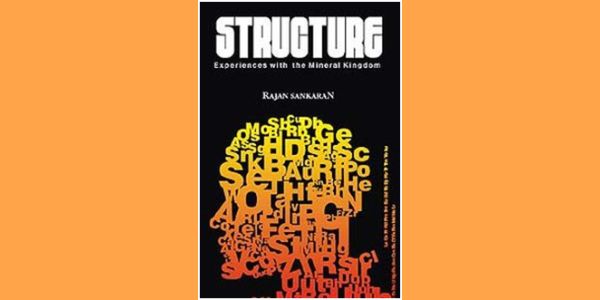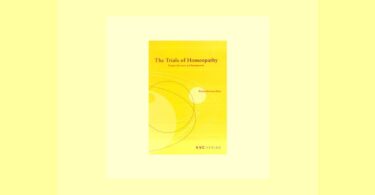Reprinted with permission of the National Journal of Homeopathy
Two Volumes – hard Cover – 1053 pages
Publisher: Homoeopathic Medical Publishers; 2008 edition (October 1, 2008)
Language: English
ISBN-10: 8190337882
ISBN-13: 978-8190337885
Price: $135
The man is a prodigiously talented writer. He churns out books faster than I can read them! So we are going to review them backwards… i.e. the latest offering first then the previous and so on. In the last one year he has brought out 3 large volumes and the latest one is in 2 volumes. This is the one we are doing first. Dr Padmaja Pai Shenoy has taken the onus to do all.
I have read almost all the books that Rajan has published and I must say each of his books have made a tremendous impact on me and I have benefitted immensely. I was overjoyed to receive the books from Vishpala for review. After his books on ”An Insight into Plants” He has come up with these books on minerals and the next in the offing are his series of books on animals.
Rajan has gallantly dedicated this book to Jan Scholten, “in acknowledgement and appreciation of his cardinal contribution to the understanding of the mineral kingdom.”. In this work he has extensively dealt with each and every mineral of the periodic table–he has discussed the similarities /differences in each row and each column of the periodic table , in a precise and lucid manner, helping us deepen our understanding of each row and column and the minerals therein.
To explain his ideas he says:
”This is an attempt to know remedies not just as a mere collection of randomly selected symptoms but to understand them beyond the physical/local symptoms, or mental/emotional symptoms…..ie to know their vital sensation….” ”which kingdom/subkingdom, what is the source of the non-human language.” ”…..the energy of each kingdom is different. Likewise we as humans borrow a similar energy pattern (from one of these kingdoms) which corresponds to our inner way of perceiving and reacting. ”…this is the ”other song”; this ”song” plays alongside ‘”our human song”. This ”other song” is the second melody and plays concurrently with our natural human song. It influences our life and interferes from time to time. It is in itself melodious and complete, but it is out of place and creates disharmony due to the human song already being played in us. Hence we get sickness/disease–when we can fathom from which kingdom and which sub-type this ”other song” is, we can easily identify the right remedy and help restore our patients to health.
He goes into the fundamental differences between the kingdoms:
PLANTS: Sensitivity and Reactivity Sensitivity: things affect me.; Changeability: changing according to external circumstances. Adaptability: problems with being adaptable. Reactivity. Prominence of one sensation and its opposite. …
ANIMAL: Survival: Pattern: the case will have different aspects, each of which will be concerned with some bodily function. Sequence. Struggle. Competition. Process. The need to survive is the underlying theme.
MINERALS: Structure: A feeling of lack or of losing structure, and the need to be complete; development and “’stuck” feeling; Ability. STRUCTURE is understood in terms of Existence, Identity, Position, Relationships, Security, Performance, Responsibilty”.
”The central features of the mineral kingdom are its structure and organization….We find these features of structure and organization in persons whose ”Other Song”‘ coincides with the energy of a mineral. These people are very well organized , their speech is measured and their clothes are immaculate. They speak in a systematic manner and their writing too is well structured and straight. Their main problem is around deficiency or loss of structure.
After the initial fundamentals, in the rest of both the books he goes into thorough details of each mineral in each row and each column. This is voluminous and needs a careful and thorough perusal.
SOME BRIEF EXPLANATIONS:
”Understanding of Rows:
He concludes that, ”The periodic table is a replica of the development of a person starting from conception to fetal life, to birth, infancy, childhood, teenage years, adulthood, and finally old age and death. We can identify the row by knowing in which stage of development is an individual stuck in .For each row, how relatively developed or undeveloped they are in that particular issue will decide the column. So the remedies on the left hand side of the periodic table will experience a lack in their structure, in the middle they will be successful and on the right hand side will experience losing or the loss of their structure.”
Row 1: Conception and existence
Row 2: Fetal life and birth process
Row 3: Identity and nourishment
Row4: Security and task
Row 5: Creativity and performance
Row 6: Responsibility
Row 7: Letting go
UNDERSTANDING OF COLUMNS:
“In column 1 there is just the notion of the structure but in reality it is totally absent and there is complete dependence.
From columns 2 to 9 there is a gradual process of developing the structure. This process reaches a peak at column 10: the structure is complete and there is success.
From column 11 onwards, there are efforts to maintain and defend the successful structure against various challenges.
From column 12 onwards through column17 there is a varying degree of degradation, from the start of the degenerative process to utter collapse of the structure.
In column 18 (noble/rare gases) there are no more issues of that structure so there is a calm and contented state. The remedies on the left side of the periodic table are still dependent on others for support and to complete their structure (they have a feeling of lack). On the other hand the remedies on the right side of the periodic table have the feeling that they have to do it on their own without anybody to help. From columns 10-18 the feeling of loss/losing the structure gradually increases.”
I would like to give a brief idea of a remedy as it is explained in the book:
Alumina
Confusion about identity. The feeling, writes Rajan, is, ‘Do I want to be me or do I want to be what you want me to be? I am separate but who am I?’ Often Alumina patients use the word ‘moulding”’ and it basically signifies the suppressing of one’s individuality and choice and letting others have that control to decide and make choices.
Magnesium- Sulph
”The central theme of Sulphur is the desire to be appreciated with feelings of insult and a hurt ego if they are not appreciated.”
Hence the main feeling of Mag-Sulph is, ‘I am scorned/disgraced/insulted/not appreciated by the person from who I need care, nourishment ,and protection and I must make a great effort to gain appreciation or to be valued by the other person.”’
A Case of Mag-sulph
A 21yr old woman was seen in March 2006 suffering from rapidly progressive glomerular nephritis.
CHIEF COMPLAINT: 24 hr urine protein loss: 6gms. Legs swollen for 20 days
The case analysis reveals her as a person who won’t do anything if her father disapproves. She is sensitive to insults and embarrassment. She would suppress her own choice in favor of her parents and also make efforts for them to seek their approval. If insulted or embarrassed she gets very upset.
Sulphates want to win the appreciation of others to give them a sense of self. Mag-sulph likes to do things for the ones they depend upon. The other part of the salt dictates for what they are dependent. So if there is dependence for care and nourishment, then it is Mag-sulph. If they are dependent for financial security, then it can be Kali or Calc-Sulph and so on.
After being given Mag-sulph 1M single dose, her headaches reduced but the protein loss in the urine increased so Mag-sulph 30C twice daily was given. Follow up in July 2007 showed 24 hr protein loss 1.7gm. She is much better and got married. .Was advised to continue Mag-sulph twice daily. Last follow up in Sept 07 showed urine protein to be within normal limits. She conceived and was better and happier.
I strongly feel all of Dr. Rajan Sankaran’s books must be made part of the curriculum in all the colleges all over the world, for all the students of Homoeopathy. His ideas though profound, are written in an easy lucid style and I am sure the students of Homoeopathy will not fumble and stumble and cross their fingers and hope they have the right remedy, but will be filled with a certainty and an assurance of the right remedy selection after reading and understanding Dr. Sankaran’s works.”




